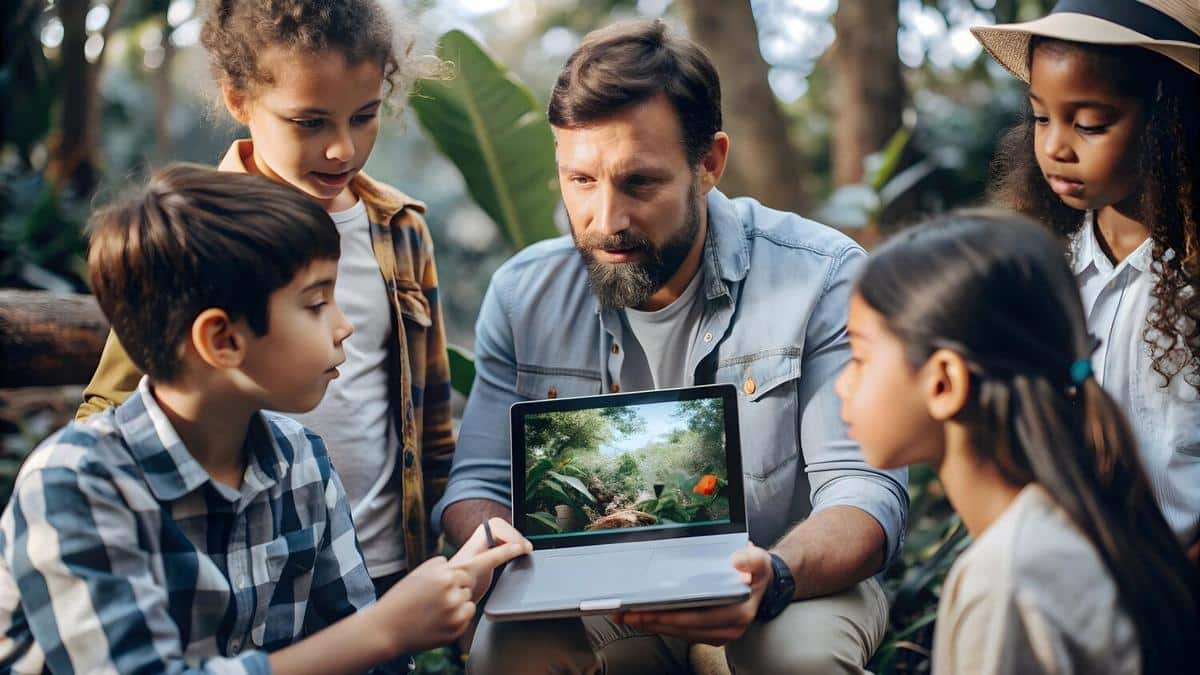
Virtual Classrooms: Reducing Paper Use in Schools
In an era where sustainability is becoming increasingly vital, schools are turning to virtual classrooms as an innovative solution to reduce paper waste and promote environmentally friendly practices.
Virtual classrooms have emerged as a significant development in the education sector, offering a tech-savvy approach to learning while addressing environmental concerns. By reducing reliance on paper, schools can significantly lessen their ecological footprint. This shift towards digital learning not only conserves resources but also prepares students for a future where digital literacy is paramount.
Benefits of Virtual Classrooms
The benefits of virtual classrooms extend beyond just paper reduction. According to a study by the Environmental Paper Network, the paper industry is the third-largest industrial polluter of air, water, and soil. By adopting digital resources, schools can significantly cut down on paper use, thereby contributing to a cleaner environment.
“Incorporating technology into education can drastically reduce our dependency on paper,” says Dr. Lisa Thompson, an expert in educational technology. “It encourages both students and educators to engage with materials in a more interactive and sustainable way.”
Statistics Supporting Digital Learning
A report by the World Economic Forum highlights that digital learning can reduce paper usage by up to 90% in educational institutions. This drastic reduction not only saves trees but also decreases the carbon footprint associated with paper production and waste.
Real-Life Example
Consider the example of Greenfield High School, which transitioned to a fully digital curriculum two years ago. The school reported a 75% reduction in paper use, leading to substantial cost savings and a positive environmental impact.
Actionable Tips for Schools
- Implement Learning Management Systems (LMS): Tools like these facilitate the distribution of materials and communication without paper.
- Encourage E-books: Adopt digital textbooks to replace traditional ones.
- Online Assignments: Use platforms for submitting and grading assignments digitally.
- Promote Collaboration Tools: Encourage students to use digital platforms for group projects and discussions.
Resources for Further Learning
For schools looking to make the transition, resources such as Edutopia and Education World offer valuable insights and guidance.
| Traditional Classroom | Virtual Classroom |
|---|---|
| High paper usage | Reduced paper usage |
| Limited access to resources | Unlimited access to digital resources |
| Fixed learning hours | Flexible learning schedules |
| Physical storage needs | Digital storage solutions |
| Higher environmental impact | Lower environmental impact |
| One-way communication | Interactive learning |
| Textbook costs | Reduced textbook costs |
| Traditional teaching methods | Innovative teaching methods |
Frequently Asked Questions
How do virtual classrooms help in reducing paper use?
Virtual classrooms facilitate digital materials and assignments, significantly reducing the need for paper use.
What are some tools that support virtual learning?
Learning Management Systems, e-books, and collaboration platforms like Google Classroom and Microsoft Teams are popular tools.
Are there cost benefits to using virtual classrooms?
Yes, aside from environmental benefits, schools can save on paper, printing, and textbook costs.
Conclusion
Transitioning to virtual classrooms not only supports sustainable education but also enhances learning experiences by integrating technology. Schools embracing this change contribute to environmental conservation while equipping students with essential digital skills. As we move towards a more technologically advanced society, embracing virtual classrooms is a step in the right direction for both education and the environment.


